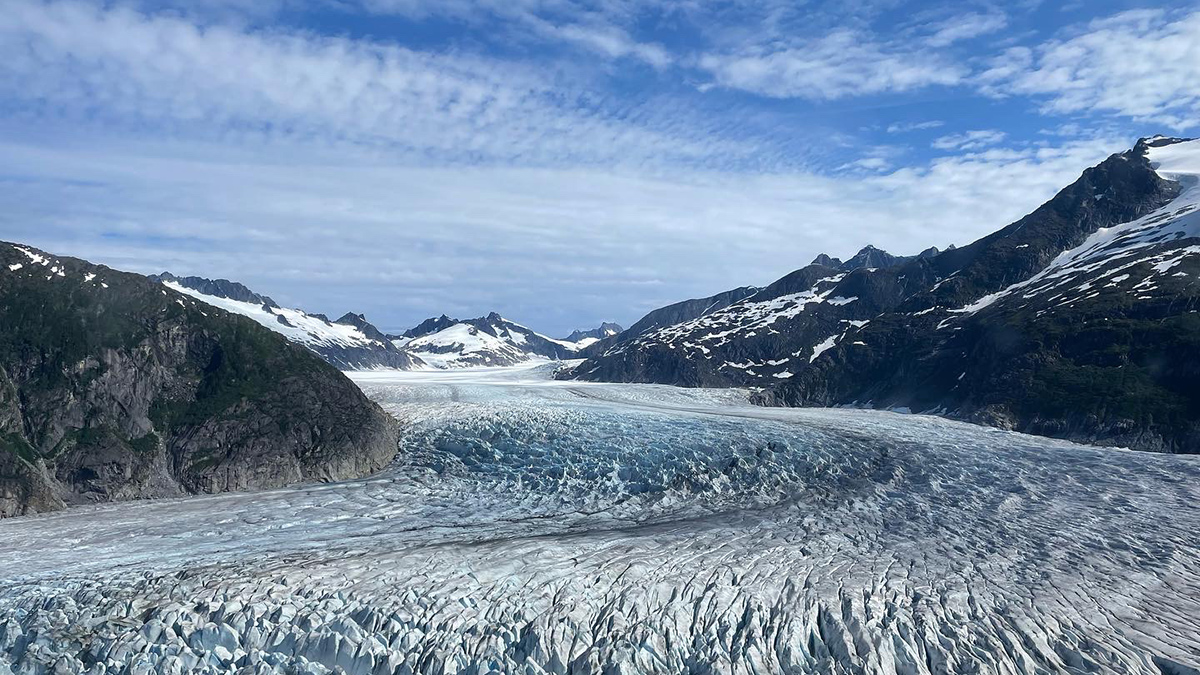Source: Global Biogeochemical Cycles
Glaciers provide a unique opportunity for researchers to measure levels of atmospheric carbon deposition. Unlike other terrestrial ecosystems, these slow-moving rivers of ice do not have other large reservoirs of soil or vegetation that might obscure how much carbon they receive from the atmosphere.
In most terrestrial ecosystems, dissolved organic matter comes from plants and soil and can contain both organic carbon and black carbon (the sooty black product from wildfires and burning fossil fuels). In glaciers, organic matter is predominantly derived from in situ microbial production and atmospheric deposition. Both can contribute to downstream food webs and broader biogeochemical cycling.
Understanding how glaciers get their carbon, including how much comes from atmospheric deposition, can help scientists understand how human activity affects the glacier carbon cycle and ecosystems.
Holt et al. investigated dissolved organic matter in the meltwater from 10 glaciers across Alaska, Switzerland, Kyrgyzstan, and Ecuador. By examining dissolved organic carbon and black carbon isotopes, as well as molecular-level composition, researchers found that anthropogenic pollutants significantly influenced the composition of dissolved organic matter in glaciers and that this influence varied by region.
The researchers collected samples from each glacier outflow stream and determined the age of the dissolved organic carbon in the samples. These ages offered an isotopic signature of their sources. For instance, younger samples might originate from wildfire material and microbial activity on the glacier surface, whereas older material more likely originated from ancient carbon sources, namely, fossil fuels.
Each region displayed different amounts of dissolved organic carbon linked to anthropogenic atmospheric pollution, ranging from 12% to 91%, with a median of 50%. Carbon from fossil fuels was more prevalent in the dissolved organic matter of the Alaskan glacier. In Ecuador, there was a higher relative contribution of carbon from biomass burning, such as wildfires, and in situ microbial activity. The exact source, age, and makeup of dissolved organic carbon and dissolved black carbon varied between different glaciers outflows. But overall, the researchers say, fossil fuels are affecting the carbon content in glacier outflow globally, with implications for the ecosystems that depend on them. (Global Biogeochemical Cycles, https://doi.org/10.1029/2024GB008359, 2025)
—Rebecca Owen (@beccapox.bsky.social), Science Writer


